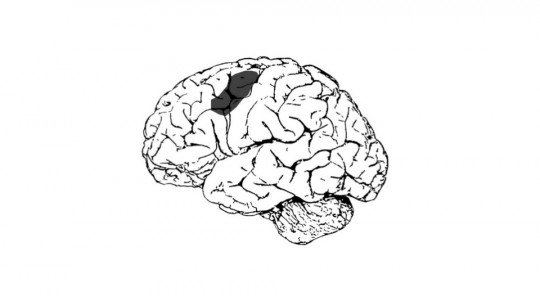Language is the foundation of human communication, shaping how we connect with others, express our thoughts, and understand the world. When language development does not follow typical patterns, it can impact social interactions, learning, and emotional well-being. One such language disorder is Mixed Receptive-Expressive Language Disorder (MRELD), a condition that affects both the understanding (receptive) and production (expressive) of language.
In this detailed exploration, we will uncover what Mixed Receptive-Expressive Language Disorder is, its symptoms, causes, diagnosis, and approaches to treatment. Whether you are a parent, educator, or simply curious about language disorders, this comprehensive guide aims to provide clarity and practical insights about MRELD.
What is Mixed Receptive-Expressive Language Disorder?
Mixed Receptive-Expressive Language Disorder is a communication disorder characterized by difficulties in both understanding spoken language and expressing oneself verbally. Unlike disorders that affect either receptive or expressive language alone, MRELD involves challenges in both domains, making communication especially difficult for those affected.
This disorder typically appears in early childhood and is marked by delays or impairments that cannot be attributed to other developmental issues such as hearing loss, intellectual disability, or neurological disorders.
Key Aspects of MRELD
- Receptive language difficulties: Challenges in understanding words, sentences, and conversations.
- Expressive language difficulties: Problems with forming words, sentences, and conveying ideas clearly.
- Mixed impact: Both comprehension and verbal expression are affected, often simultaneously.
- Developmental condition: Usually diagnosed in children during their language development years.
How Does Mixed Receptive-Expressive Language Disorder Present?
Children with MRELD may exhibit a range of symptoms that affect their ability to process and produce language. These symptoms vary depending on the severity and individual differences but often include:
Receptive Language Symptoms
- Difficulty understanding vocabulary and instructions
- Trouble following conversations, especially complex or multi-step directions
- Struggling to grasp abstract concepts or nuanced language
- Problems with answering questions or engaging in dialogues
Expressive Language Symptoms
- Limited vocabulary compared to peers
- Using short or incomplete sentences
- Difficulty constructing grammatically correct sentences
- Problems finding the right words (word-finding difficulties)
- Speech that is hard to understand or unclear
- Challenges telling stories or explaining events in a coherent way
Social and Emotional Impact
Language difficulties in MRELD can lead to frustration, social withdrawal, and lowered self-esteem. Children might avoid social interactions due to fear of misunderstanding or being misunderstood, which can affect their emotional development and peer relationships.
Causes and Risk Factors
The exact cause of Mixed Receptive-Expressive Language Disorder is not fully understood. However, several factors may contribute to its development:
- Genetic predisposition: Family history of language or learning disorders increases risk.
- Neurological differences: Variations in brain areas responsible for language processing.
- Environmental factors: Limited language exposure or stimulation in early childhood.
- Prenatal and perinatal complications: Premature birth or birth complications may increase vulnerability.
- Hearing impairments: Even mild hearing loss can affect language acquisition.
It’s important to note that MRELD is not caused by intellectual disabilities or sensory impairments alone, although these conditions can coexist.
Symptoms of Mixed Receptive-expressive Language Disorder
Symptoms of mixed receptive-expressive language disorder may vary depending on the severity and individual characteristics, but they often include:
- Difficulty understanding spoken or written language
- Limited vocabulary and difficulty finding the right words
- Challenges in forming grammatically correct sentences
- Trouble following directions or understanding complex sentences
- Difficulty participating in conversations or expressing thoughts and ideas
- Delayed speech and language development compared to peers
Individuals with MRELD typically exhibit challenges in both understanding and expressing language. They may struggle to comprehend spoken words or sentences, leading to difficulties in following instructions or participating in conversations. Expressive language difficulties manifest as struggles in forming coherent sentences, finding the right words, or organizing thoughts verbally. These challenges can significantly impact social interactions, academic performance, and overall quality of life.
How is Mixed Receptive-Expressive Language Disorder Diagnosed?
Diagnosing MRELD requires a thorough evaluation by specialists such as speech-language pathologists, psychologists, or developmental pediatricians. The diagnostic process usually includes:
- Comprehensive language assessment: Testing both receptive and expressive skills using standardized tools.
- Hearing evaluation: To rule out hearing loss as a cause of language difficulties.
- Developmental and medical history review: To identify risk factors or related conditions.
- Observation: Assessing communication in natural settings, such as home or school.
- Cognitive assessment: To differentiate language disorder from intellectual disabilities.
A diagnosis of MRELD is typically made when language delays are significant, persistent, and not better explained by other factors.
Diagnostic criteria
In order to be diagnosed with a mixed receptive-expressive language disorder, it is necessary that the diagnostic criteria for it be met. The DSM-IV-TR (Diagnostic Manual of Mental Disorders) specifies the following criteria:
1. Scores below expectations
Criterion A specifies that the scores obtained through evaluations of the development of the two types of language, receptive and expressive, these being extracted from standardized tests and administered individually, are substantially below those obtained through standardized assessments of non-verbal intellectual ability.
Criterion A also specifies the following manifestations that appear in mixed receptive-expressive language disorder:
2. Performance interference
Criterion B of the mixed receptive-expressive language disorder establishes that the deficiencies that appear in receptive and expressive language, create interference in academic or work performance, or social communication
3. It is not a pervasive developmental disorder (PDD)
On the other hand, in order to be diagnosed with mixed receptive-expressive language disorder, the boy or girl must not meet the criteria for a PDD. That is to say, the diagnosis of PDD would nullify the diagnosis of mixed receptive-expressive language disorder.
4. If there is another disorder, the deficiencies are excessive
Finally, in the event that there is another previous diagnosis (for example: intellectual disability, environmental deprivation, sensory or motor speech deficit…), the deficiencies that appear in language exceed those usually associated with this type of disorders. That is, the previous diagnosis would not explain these difficulties.
Treatment and Intervention Strategies
Early and targeted intervention is crucial for children with Mixed Receptive-Expressive Language Disorder. Treatment focuses on improving both comprehension and expressive abilities and may include:
Speech and Language Therapy
Speech-language therapy is the cornerstone of treatment. Therapists design individualized programs that may involve:
- Vocabulary building and word retrieval exercises
- Sentence formation and grammar practice
- Activities to enhance listening and understanding skills
- Using visual aids, gestures, and alternative communication methods to support comprehension
- Social skills training to improve pragmatic language use
Family and Educational Support
- Parental involvement: Parents are coached to use language-rich interactions and reinforce therapy goals at home.
- School accommodations: Individualized Education Programs (IEPs) or 504 plans can provide support such as speech therapy in school, extra time for assignments, or modified instructions.
- Multidisciplinary approach: Collaboration between speech therapists, educators, psychologists, and pediatricians ensures comprehensive care.
Assistive Technologies
In some cases, augmentative and alternative communication (AAC) devices or apps may be used to support communication when verbal expression is severely impaired.
Prognosis and Long-Term Outcomes
With appropriate intervention, many children with Mixed Receptive-Expressive Language Disorder make significant improvements in communication skills. Early diagnosis and therapy are linked to better outcomes in:
- Academic achievement
- Social relationships
- Emotional well-being
However, some individuals may experience ongoing language challenges into adolescence and adulthood, particularly in complex language use or social communication.
Common Myths and Misconceptions About MRELD
There are several misconceptions about Mixed Receptive-Expressive Language Disorder that can lead to misunderstandings:
- Myth: “Children with MRELD will outgrow the disorder.”
Reality: While some children improve with time and therapy, many require ongoing support. - Myth: “Language problems are caused by laziness or lack of effort.”
Reality: MRELD is a neurodevelopmental condition, not a behavioral choice. - Myth: “If a child speaks well, they don’t have language difficulties.”
Reality: A child may speak fluently but still have trouble understanding or using language effectively.
How Parents and Caregivers Can Help
Parents and caregivers play a vital role in supporting children with MRELD:
- Use clear, simple language and repeat instructions when needed.
- Encourage reading aloud and storytelling to build vocabulary.
- Create a language-rich environment with plenty of conversations and interactions.
- Be patient and celebrate small progress to build confidence.
- Collaborate closely with therapists and educators.
Other classifications: DSM-5 and CIE
We have seen how mixed receptive-expressive language disorder is located within the DSM-IV-TR, as a language disorder. However, the new version of the manual, the DSM-5, introduces changes and unifies the problems of comprehension and expression, within a single disorder called “Language Disorder”. In this way, mixed receptive-expressive language disorder, in the DSM-5, would become Language Disorder.
On the other hand, in the ICD-10 (International Classification of Diseases, WHO), Mixed Receptive-Expressive Language Disorder does not exist as such; Instead, either the expressive disorder or the receptive disorder is usually diagnosed (the most severe is diagnosed).
Mixed receptive-expressive language disorder is a communication disorder characterized by difficulties in understanding and expressing language. By understanding the causes, symptoms, diagnosis, and treatment options for MRELD, individuals, families, and healthcare professionals can work together to support language development and improve communication skills.
FAQs About Mixed Receptive-Expressive Language Disorder: What is It?
What age is MRELD usually diagnosed?
MRELD is often diagnosed in early childhood, typically between ages 2 and 5, when language delays become more apparent.
How is MRELD different from other speech disorders?
MRELD affects both understanding and expression of language, while other speech disorders may involve only articulation or fluency problems.
Can MRELD be confused with autism spectrum disorder?
Some language difficulties overlap with autism, but MRELD primarily affects language skills without the broader social and behavioral symptoms of autism.
Is MRELD hereditary?
There is evidence that language disorders can run in families, suggesting a genetic component to MRELD.
What types of professionals treat MRELD?
Speech-language pathologists, developmental pediatricians, psychologists, and educators often collaborate to support children with MRELD.
Can adults have MRELD?
MRELD is typically diagnosed in childhood, but adults may have residual language challenges from the disorder.
What is the role of early intervention?
Early intervention improves the likelihood of better language development and reduces secondary difficulties related to learning and social skills.
Are there educational accommodations available?
Yes, many schools provide tailored support through IEPs or 504 plans to help children with MRELD succeed academically.












